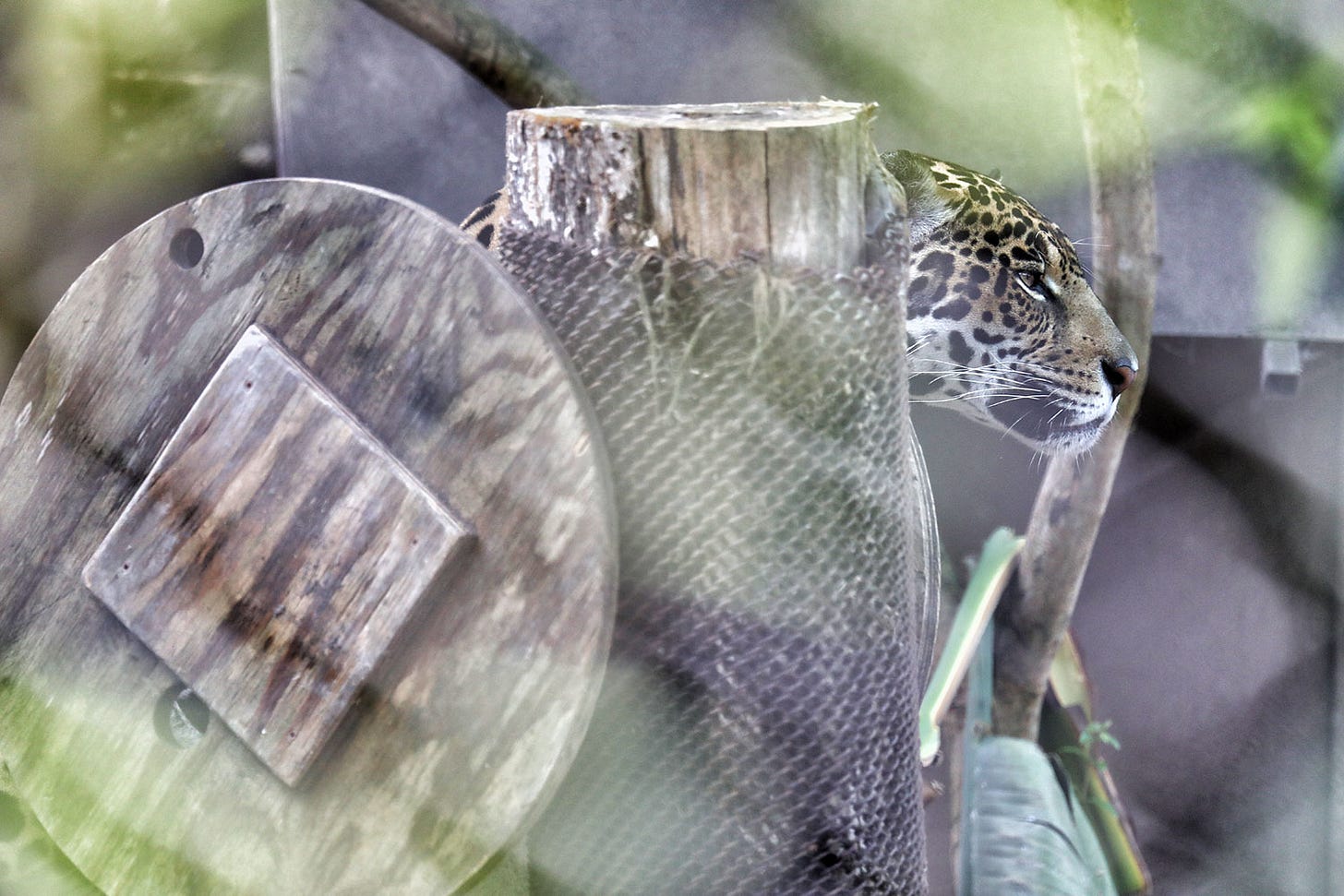The Silent Death of Lamont: SF Zoo’s Jaguar Shame
How a 13-year-old jaguar disappeared, and why the zoo said nothing

In May 2023, the San Francisco Zoo proudly announced the arrival of Lamont, an 11-year-old male jaguar transferred from the Sacramento Zoo. Born at the San Diego Zoo in 2012 and originally named Tikal, Lamont had already spent his entire life in captivity—shipped from one facility to another in a system that treats animals like inventory, not individuals.
Now, just two years later, Lamont is dead.
Not a word from the San Francisco Zoo—maybe because it followed too closely on the heels of another preventable tragedy: the death of their red panda.
No media announcement. No mention on the zoo’s website or social media. Just a quiet disappearance—his name wiped from the jaguar exhibit, his life swept under the rug.
But the public noticed. A few weeks ago, Zoo Watch began receiving messages from concerned visitors and supporters:
“Where’s Lamont?”
“Why hasn’t he been on exhibit?”
“What happened to the jaguar?”
Their concerns were valid. The zoo had taken Lamont off exhibit—and now we know why: he had died, euthanized for reasons that remain undisclosed..
A Life of Captivity, Not Conservation
Lamont’s time in San Francisco was as unnatural as his quiet disappearance. For the past two years, he was held in a 30-by-40-foot cage, a space smaller than many suburban living rooms, with no trees to climb, no complex terrain, and no meaningful stimulation.
Rather than providing a habitat that mirrored the lush forests jaguars call home, the San Francisco Zoo placed him in a barren, temporary enclosure. This was not a place of refuge. It was a holding pen.
Lamont wasn’t thriving— and now we know he was hardly surviving.
A History of Injury, Hidden and Rewritten
Lamont’s visibly missing tail drew questions from the start. But few knew the real story. He had lost it at the Sacramento Zoo during a failed breeding attempt. Like so many animals in captivity, Lamont was forcibly introduced to a female for genetic pairing—an encounter that ended in violence, pain, and permanent injury.
A jaguar’s tail isn’t just for show. It plays a crucial role in balance, movement, and communication. Losing it can impair coordination and diminish quality of life—especially in the confined, artificial spaces of a zoo.
That scar followed him to San Francisco, but so did the same institutional mindset: breed, exhibit, rotate, repeat. No regard for the animal’s well-being. No accountability when things go wrong. No transparency with the public.
The Bigger Picture
Jaguars can live up to 25 years in captivity. Lamont didn’t make it past 13.
His story isn’t just about one jaguar—it’s about a broken system. It’s about how animals are moved around the country like property. How they’re forced into pairings, confined to unnatural spaces, injured, and then erased. It’s about how institutions like the San Francisco Zoo continue to brand themselves as conservation leaders while operating facilities that are outdated, under-resourced, and unfit for modern animal care.
In October 2024, a scathing city audit declared the zoo “extremely outdated” and “unsafe for animals and visitors alike.” And yet, no changes were made. No upgrades to the jaguar habitat. No recognition of the fact that confining one of the world’s most powerful predators, built to roam more than 60 square miles, to a cage no larger than a studio apartment is indefensible.
Silence Is a Statement
Tikal’s death should have been a moment of reflection, remorse, and reckoning.
Instead, it was hidden.
That silence says everything about how this institution views its animals and the public it supposedly serves.
He wasn’t rescued. He wasn’t celebrated. He was used—injured, displayed, then quietly discarded.
If this is how the San Francisco Zoo treats its most charismatic species, what’s happening to the animals out of sight?
It’s time for a new model. One rooted in transparency, ethics, and respect for the individual lives behind the glass.
Tikal’s story didn’t have to end this way. But now that it has, we owe it to him—and to every animal still locked behind those gates—to make sure it never happens again.
